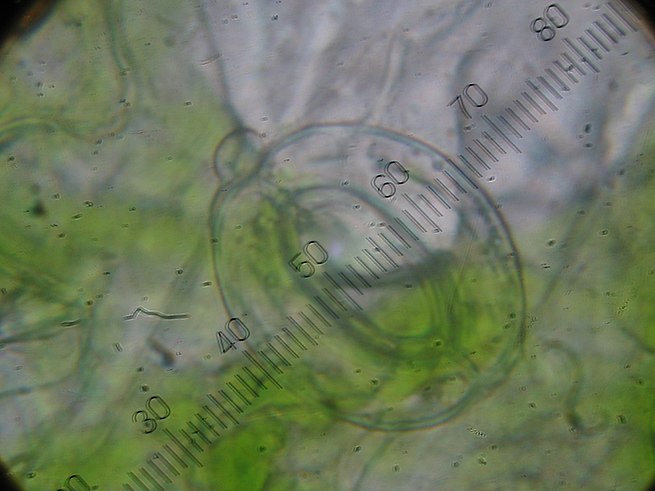
-
Stomata
In botany, a stoma (plural “stomata”), also called a stomate (plural “stomates”) (from Greek στόμα, “mouth”), is a pore, found in the epidermis of leaves, stems, and other organs, that facilitates gas exchange. The pore is bordered by a pair of specialized parenchyma cells known as guard cells that are responsible for regulating the size of the stomatal opening.
The term is usually used collectively to refer to the entire stomatal complex, consisting of the paired guard cells and the pore itself, which is referred to as the stomatal aperture. Air enters the plant through these openings by gaseous diffusion, and contains carbon dioxide and oxygen, which are used in photosynthesis and respiration, respectively. Oxygen produced as a by-product of photosynthesis diffuses out to the atmosphere through these same openings. Also, water vapor diffuses through the stomata into the atmosphere in a process called transpiration.
Stomata are present in the sporophyte generation of all land plant groups except liverworts. In vascular plants the number, size and distribution of stomata varies widely. Dicotyledons usually have more stomata on the lower surface of the leaves than the upper surface. Monocotyledons such as onion, oat and maize may have about the same number of stomata on both leaf surfaces. In plants with floating leaves, stomata may be found only on the upper epidermis and submerged leaves may lack stomata entirely. Most tree species have stomata only on the lower leaf surface. Leaves with stomata on both the upper and lower leaf are called amphistomatous leaves; leaves with stomata only on the lower surface are hypostomatous, and leaves with stomata only on the upper surface are epistomatous or hyperstomatous. Size varies across species, with end-to-end lengths ranging from 10 to 80 µm and width ranging from a few to 50 µm.
-
Stroma (noun)
The tissue structure of an organ, etc., that serves to support it.
